Milan is a city in northern Italy and the regional capital of Lombardy, which is the second-most populous city after Rome. It attracts millions of tourists, designers and artists each year who come to experience the Italian lifestyle in a vibrant city.
For those new to the city, Milan has everything needed to ensure a good work-life balance, including delicious Italian cuisine, abundant nightlife, excellent shopping, theatres, music and sport. Plus, even the modern districts haven’t lost their intrinsically Italian feel.
More recently, wealthy buyers have been investing in Milan. The Financial Times recently reported that there are several reasons that wealthy buyers have set their sights on the northern Italian city. They include a series of tax breaks, which have attracted over 88,000 foreign buyers since 2017.
Here, we touch on the appeal of Milan and how it caters to wealthy individuals so well.
Find homes in Italy via our property portal.
10 reasons why Milan appeals to the super-rich
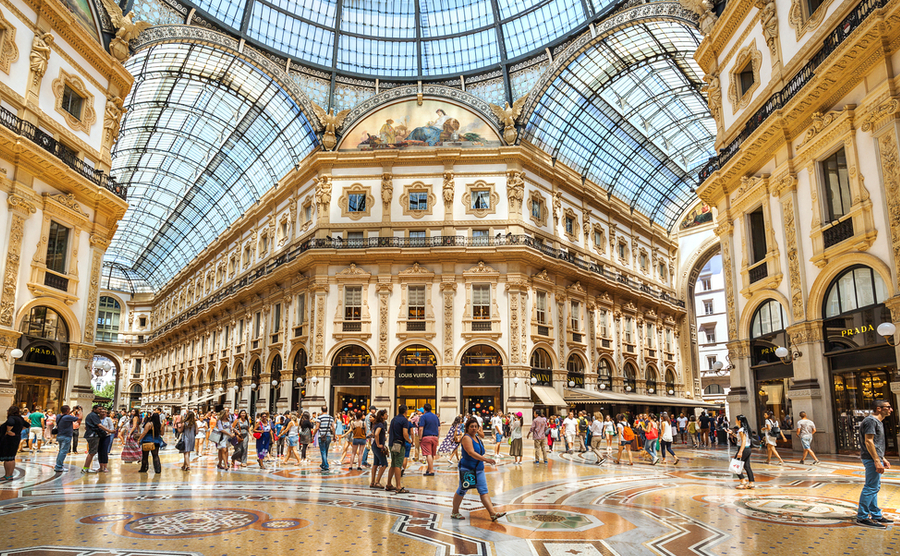
Milan, Italy – July 16, 2016: Galleria Vittorio Emanuele II is one of the most popular shopping areas in Milan. Via Olgysha on Shutterstock
1. Well-connected
Milan is an exciting place to live and do business. It is a city that inspires and innovates, forever growing with the changes in technology. Its location in Europe and access to flights to the major cities of the world, make travelling for work or pleasure a breeze. The city’s public transportation is well-organized, with a combination of metro, trams, buses and suburban trains that bring commuters from outlying districts. The excellent road and rail links make it easy to visit other top Italian destinations too.
2. Porto Nouva
The Porto Nouva district also attracts visitors and property buyers interested in its architecture, fashion boutiques and bars. The tallest skyscraper is the UniCredit Tower, but if you want spectacular views go to the 39th floor of Palazzo Lombardia.
3. Greener city homes
The most famous apartment blocks for their architecture are the two “Il Bosco Verticale” buildings. Recognised in 2015, by the Council for Tall Buildings and Urban Habitat as the world’s most beautiful and innovative skyscraper. The designers have integrated over two thousand plant species, including shrubs and tall trees, on balconies all over il Bosco Verticale. It’s like having a woodland on the facade of your home.
4. Great for Digital Nomads
Digital nomads can stay connected at various cafes, libraries and cultural centres. There are also co-working spaces such as the Talent Garden Milano Calabiana in the Navigli district, and Copernico, which has a network of co-working spaces throughout Milan. They provide a professional environment, networking opportunities and well-equipped workspaces.
5. Banking capital
Milan is the capital of finance in Italy and is home to the Italian stock exchange (Borsa Italian) which is housed in the grand Palazzo Mezanotte building. While Intesa Sanpaolo and UniCredit S.p.A., dominate the banking sector in Italy, many foreign banks also have offices or branches in Milan. Such as HSBC, J.P.Morgan, Morgan Stanley and Barclays.
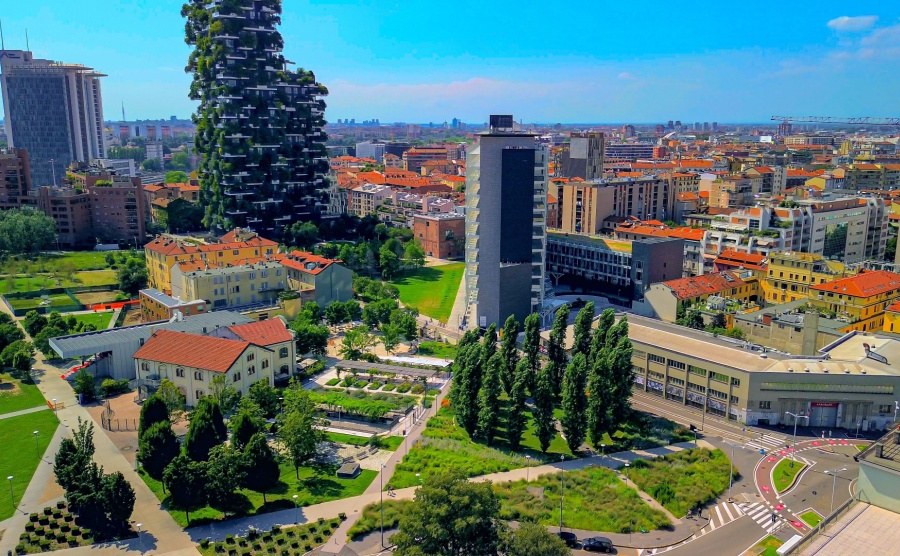
Lido Bam. Library of trees. Parco Biblioteca degli Alberi Milano
6. Beautiful parks
You don’t have to go far to see some greenery in Milan. Such as Parco delle Cave, which has woodlands, agricultural fields, and ponds for fishing. The most central park is the large Parco Sepione, which is great for jogging, cycling and working remotely, as it has WiFi. Even at the foot of the Bosco Verticale, there is a green space called Biblioteca Della Alberi (library of trees).
7. Excellent healthcare access
In Europe, Italy is the second largest manufacturer of medical products, after Germany. In Milan, hospitals and medical care are very highly regarded, both public and private. Many healthcare professionals speak English, although more so in private clinics. There are also several 24-hour pharmacies around the city.
8. Milan for fashion
Milan is renowned as a fashion and design capital. It hosts major fashion events like Milan Fashion Week. The headquarters of Prada, Armani, and Versace are in Milan, and there are thought to be around 12,000 companies in Milan involved in the fashion industry.
The Quadrilatero della Moda is Milan’s luxury shopping district and one of the most famous in the world. It has four prestigious streets: Via Montenapoleone, Via Manzoni, Via Della Spiga and Corso Venezia. There are also several museums in the area, including Palazzo Marando, which is dedicated to fashion, costume and image.
Giorgio Armani has also opened “Armani/Silos”, a large exhibition space in the Porta Genova district. Spread over four floors it showcases more than 600 garments from the fashion house’s 40-year history.
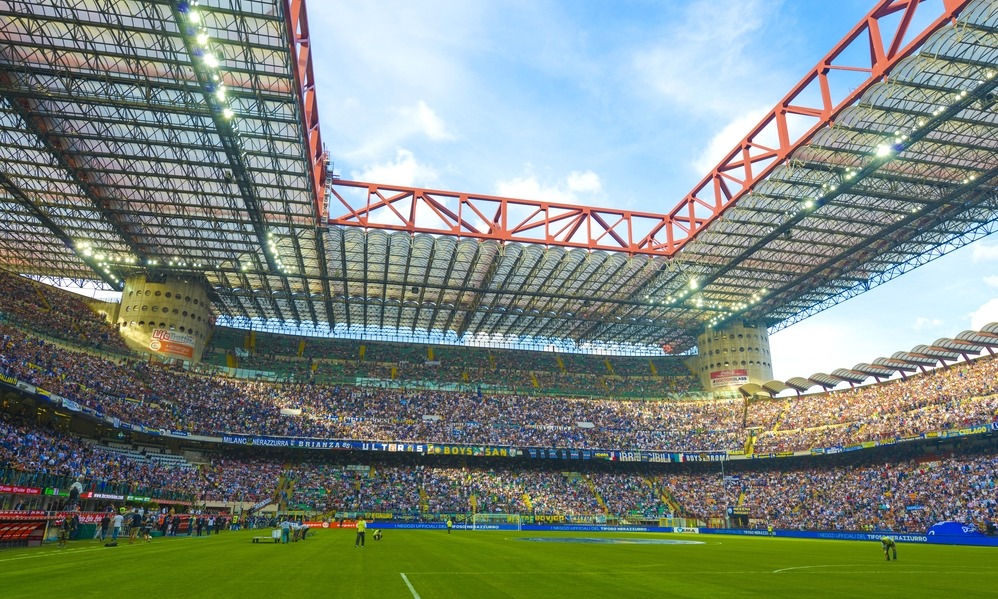
San Siro Stadium, home of Inter Milan FC & AC Milan FC
9. Sport
Milan has a strong sporting culture, with residents passionately supporting many sports. The city boasts two major football teams. A.C. Milan and Inter Milan. Plus, Formula 1 fans can reach the Monza race circuit in around 40 minutes by car, or 16 minutes on the train. You can watch AC Milan play football at the San Siro stadium in Milan for as little as €35.00. Season tickets start from €380.00. Compared to a Man City season ticket at £915.00.
There are nine excellent golf courses in the province of Milan. One of the nearest is Castello Tolcinasco Golf, just 23km from the city centre. Covering 110 hectares around a 16th-century castle, the course boasts 27 championship holes.
For winter sports enthusiasts, the Alps are not far from Milan, and there are several ski resorts to enjoy. Piani di Bobbio ski area is particularly convenient for city dwellers, because it is located between the provinces of Lecco and Bergamo and can be reached in about 1 hour 20 minutes. The ski resorts of Monte Pora, Foppolo and Pika can also be reached within two hours.
10. Italian Lakes
If water sports are more your cup of tea, then you could spend your weekends at one of the Italian lakes. The most popular Italian lakes are all within driving distance of Milan. These include Lake Como, Lake Garda and Lake Maggiore.
From Central Milan, you can drive to Lake Como in about 45 minutes to an hour. The train takes about an hour and costs from €5.20 or 19 euros for first class. Not a bad commute if you’d rather work from home by the lake and travel to Milan for meetings. You can even find beaches and bathing spots around the lakes. Plus, the seaside of Genoa is about a two-hour drive from central Milan and the same by train.
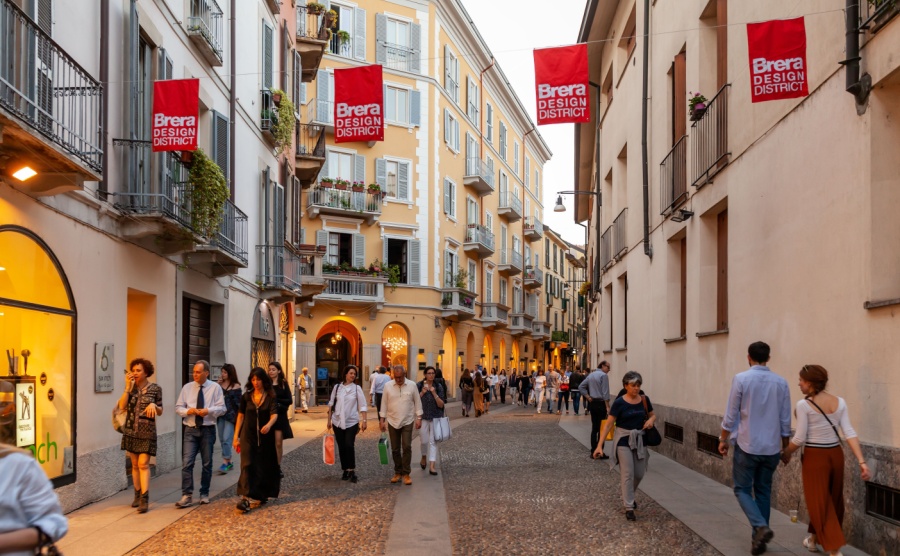
Brera design district. Image: Ruggiero Scardigno I Shutterstock.com
Great places to live in Milan
Popular with the wealthy, Porto Nouva, is one of the best areas in Milan for young professionals who want to be close to work. It is ultra-modern, yet still has a village feel. Great for business people as it is close to a railway station.
Porta Garibaldi district is located between two major work and nightlife areas, with shops and supermarkets. It is well-served by public transport.
Brera used to be full of artists and poets, but today it is mostly inhabited by wealthy businesspeople. The area has galleries, cocktail bars, perfumeries, an art school and charming old architecture.
The Navigli neighbourhood is in the area southwest of the city, which is set around canals. Historically, the waterways were used for trade, but today there are trendy bars and restaurants along its banks.
Navigli is also close to Bloom International School, which is considered one of the best international schools in the city. Nearby, is Zona Tortona which is quite similar, with affordable homes and a good community feel for families.
Porta Romana is located southeast of the city centre. The side nearest to the centre, has elegant properties, fashion showrooms and excellent restaurants. The other side has bars and craft markets. It is a good location for anyone seeking a peaceful Italian lifestyle.
San Siro is more affordable, as it is further out from central Milan. It is good for families as there are international schools nearby. There is also a good hospital and football stadium on your doorstep.
Tax advantages for the rich
So far, around 1,186 relocations to Italy have been prompted by the flat-rate tax scheme for high-income individuals. By transferring their tax residence to Italy, they have been able to pay a flat rate of €100,000 per year on their foreign income.
This tax regime is only available to “newly resident” individuals in Italy, who have been non-tax residents in Italy for at least 9 years out of the 10 years preceding their transfer to the country. The scheme is then valid for 15 years. However, Reuters reported that on 7th August 2024, the Italian government approved measures to raise this tax rate to €200,000 for future applicants. Still a good deal, for those with high incomes.
For legal guidance on buying property in Italy, speak to our trusted partners at c_legal today. Enquire here.
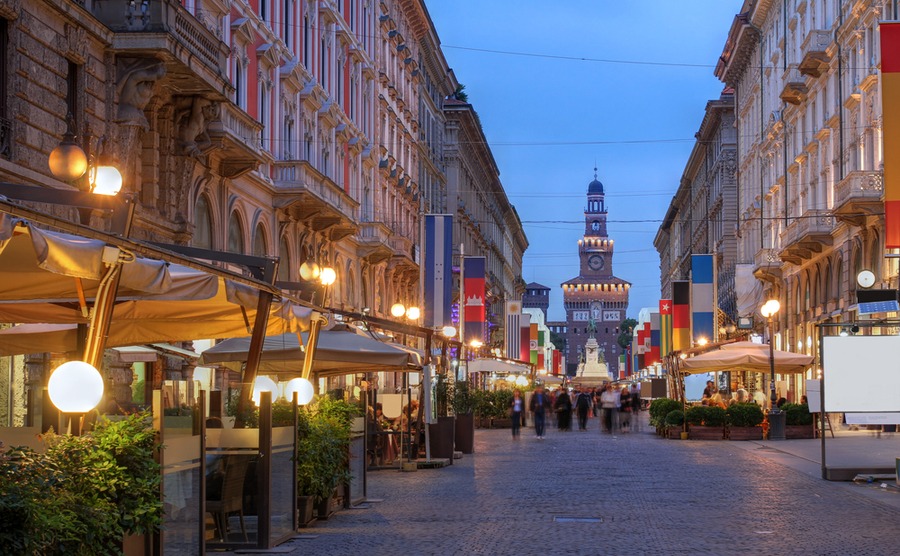
Sunset on Via Dante, one of the major pedestrian avenues in Milan – Mihai-Bogdan Lazar _ Shutterstock.com
The Milanese property market
Apartments in Milan can be within historic palazzo houses or modern buildings. Architectural styles range from Art Nouveau to contemporary elegance. The property prices are largely related to their distance from the centre.
In July 2024 the average asking price for residential properties was € 5,433 per square meter, with an increase of 2.74% compared to July 2023 (5,288 €/m²). Prices have been steadily rising each year.
The highest valued homes can be found in the centre (Centro) where they average 10.713 €/m2, However, several streets average 7,200 €/m2, such as Via Andrei and Via Carlo Giuseppe Merlot. Other zones with prestigious homes at high asking prices are Garibaldi, Moscovo, Porto Nouva, Arco Della Pace, Arena, and Pagalo. A one-bedroom apartment in a prestigious building, a short walk from the Duomo might cost in the region of €1,300,000.
A 60m2 apartment in the central area may cost €650,000 while a similar size property south of the city might cost €299,000. Yet, the commute into the centre could only take 40 minutes. On the outskirts of the city, the property prices are around half of those in the centre, averaging between 3,300 €/m² 4,800 €/m². The price of a one-bedroom apartment in Milan starts at around €249,000.
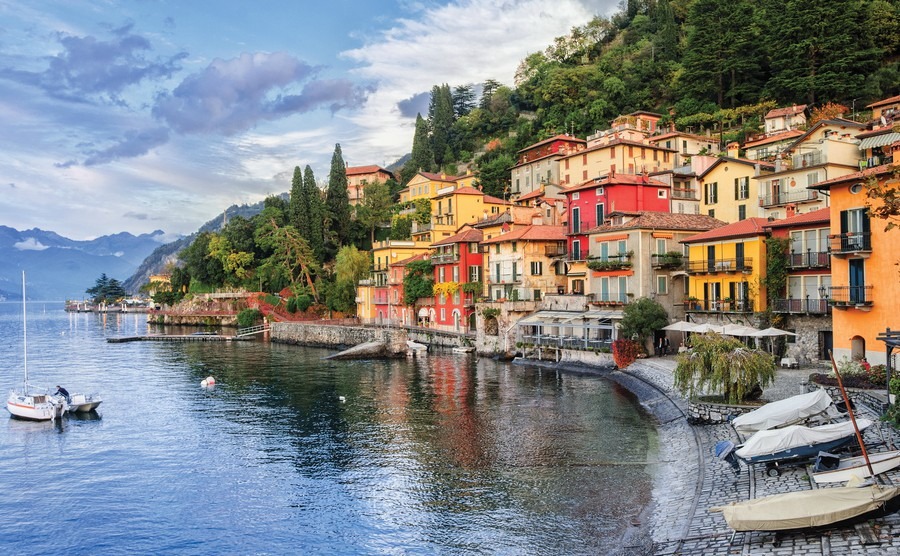
Town of Menaggio on lake Como, Milan, Italy
Milan on a modest budget
The cheapest areas to buy property in Milan are Vialba-Gallaratese, Baggio, and Forlanini. Other districts where you’ll find property priced under the city average are Corvetto-Rogoredo, Greco-Turro, San Siro-Trenno-Figino, Certosa, Comasina-Bicocca, Famagosta-Barona, Cermenate-Missaglia, Vigentino-Ripamonti, and Lorenteggio-Bande Nere.
There are plenty of things to do in Milan, that don’t have to cost the earth, including parks churches, museums and window shopping. Here are some other ideas…
Urban art: Urban art all around the suburbs can be found using an app. When you find one you simply frame it with your phone and it comes to life as an animation.
€10 opera: It’s possible to enjoy opera at Teatro Alla Scala for as little as €10. Or if you just want to look around the theatre, there is a free app with a guided tour in 7 languages, including English.
Admire the architecture: The impressive architecture is varied in style and free to view from the street. The historic centre has some grand palazzo, plus baroque, and neo-gothic churches. Highlights include the Duomo and the neoclassical chapel, San Carlo al Corso, completed in 1847.
Other buildings of note are Castello Sforzesco and the Galleria Victorio Emanuele II. Arco Della Pace (the triumphal arch) is worth seeing. For something different, there is the colourful La Torre Arcobaleno, which is a water tower in the Porta Garibaldi neighbourhood which has been transformed into a rainbow tower.
Free museums: Several museums are free to enter. Plus, on the first Sunday of every month is Domenica al Museo (Sunday at the Museum), a cultural initiative launched by the Ministry of Culture, whereby the city’s state and civic museums are open free of charge. You can find free museums here.
Art: Not only is Milan home to important pieces of Italian Renaissance art such as Leonardo da Vinci’s ‘The Last Supper’, it has also become a hub for popular contemporary art. There are many art galleries, such as the Pinacoteca di Brera which has a wide range of Italian art, from medieval to Surrealist on display, in a 17th-century palazzo near Parco Sempione. While the normal entry price is €15, there are reduced rates of €10. Plus, under 17-year-olds and the disabled get free entry, 65+ €1, EU citizens aged 18-25 €2, and there is free admission for everyone with a reservation every first Sunday of the month.
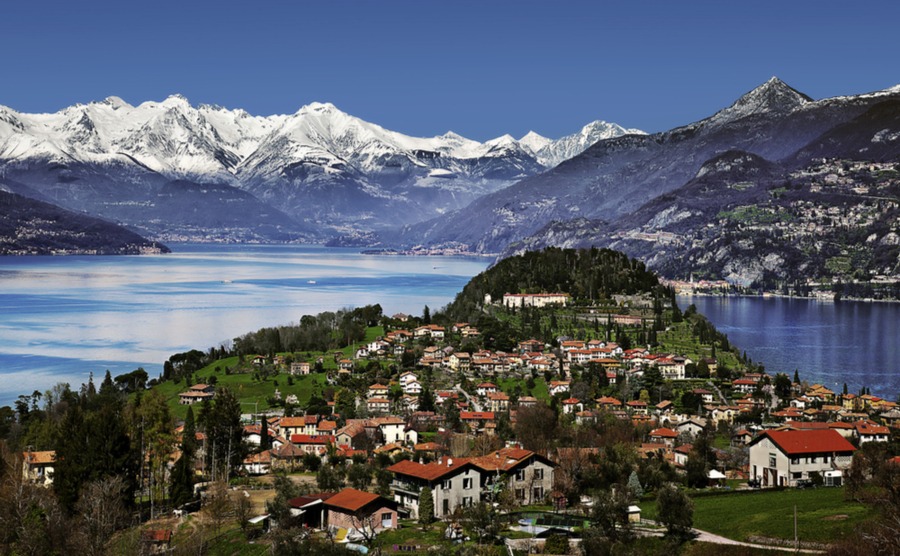
Bellagio, Como Lake, Lombardy, Italy
Property for sale in Lombardy
If you’d prefer to live outside the city and commute in, there are some lovely towns outside Milan. These include the wonderful cities of Bergamo, Brescia and Como.
On the banks of the river Ticino, and only 20 kilometres from Milan, lies the historic and cultural city of Pavia.
Another fine city with stately buildings is Varese, which is about 60 kilometres from Milan. But we mustn’t forget the city most loved for high-speed motor racing, Monza, which is only 10 km from Milan.
There are many wonderful areas in the Lombardy region, with property prices to suit every budget. See some examples on Your Overseas Home.
You might also like:
- 12 more great reasons to buy in Milan
- 6 pretty villages on Lake Como’s shores
- Discover Bergamo-Brescia, Italy’s capital of culture 2023










